Metal watering cans: characteristics and subtleties of choice
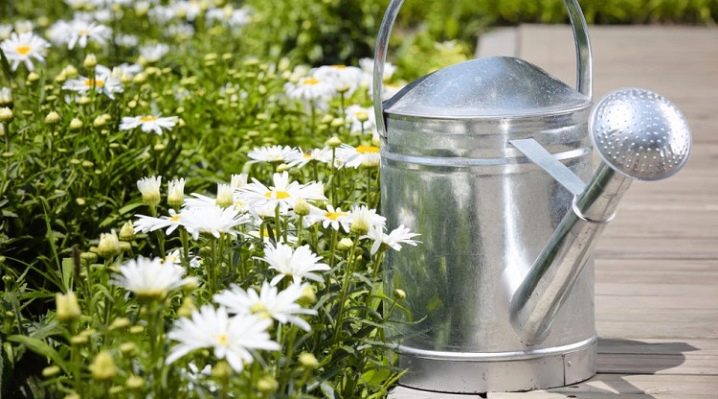
Any gardener knows that timely and correct watering is the most important aspect of growing a bountiful harvest. Today, there are many ways to automate this process. However, any automatic system will require an uninterrupted power supply.
This power supply can be costly and therefore the watering can is still the most popular hand watering tool.
Views
In any hardware store, you can find a variety of metal watering cans of different designs and sizes. The main criterion by which you can distinguish them is the purpose of the instrument.
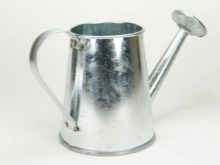


Room
These watering cans are designed for watering indoor flowers and other plants. Their feature is their compact size: such devices do not exceed 1-2 liters in volume. It is convenient to put a small watering can on a windowsill or a bedside table next to the pots.
Their spout is significantly longer than the body so that it is convenient to water even hard-to-reach places. This is due to the fact that it is not always possible to walk around or turn a flower pot.
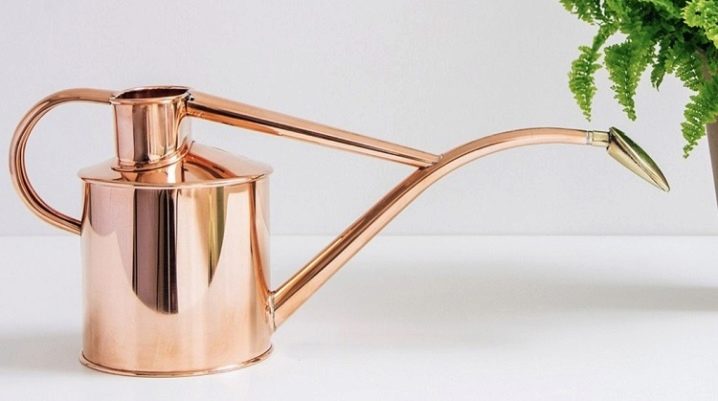
Garden
The most common type of iron watering cans are common gardening tools for watering beds, shrubs and young trees. Their volume is usually not less than 5 liters and not more than 9-10 liters. These tools have a wide neck with beveled edges to prevent splashing water when carrying. Some models come with an additional funnel for the neck and special attachments.

Decorative
Such watering cans can no longer be called tools, since their only function is to decorate the interior of a house or garden. You can buy a ready-made decorative watering can, or you can decorate an old metal one if it is leaky. Often, soil is poured into such watering cans and flowers are planted. They are painted with paints and varnished. The main thing is that such an element fits the rest of the interior of the room.
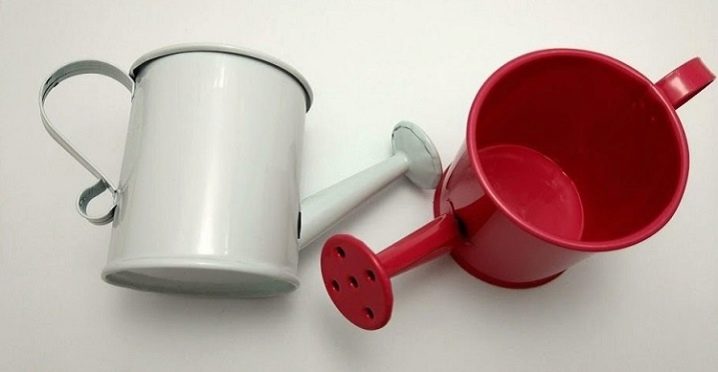
Advantages and disadvantages
Although the most popular are plastic watering cans, metal has its advantages.
- Strength and durability. Metal tolerates any mechanical damage, falls or shock well. It perfectly tolerates sudden changes in temperature and has a longer service life.
- Disinfects. Zinc containers automatically disinfect water for irrigating plants, while copper containers have a fungicidal effect. However, it is worth remembering that drinking water from these containers is dangerous to health.
- Easy to repair. Any gardener or gardener who has a metal watering can at her disposal knows how easy it is to repair it. To do this, it is enough to have a small welding machine and a patch made of a suitable material.
- The weight. While a lightweight tool is more comfortable to use, heavy weight can also be an advantage. Even a strong wind will not turn such a watering can, and a small child or pet will not drop it on himself.
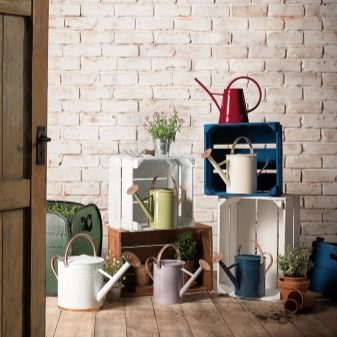

However, each material has its drawbacks, and metal is no exception.
- The weight. Not everyone can handle lifting and carrying an iron watering can filled to the brim. This is especially true for the elderly or adolescents.
- Corrosion. If the instrument is not properly cared for and stored, its bottom, walls and other parts can rust and become thinner.
- Price. Metal products are always more expensive than plastic ones.The minimum price for a small decorative watering can start from 300-400 rubles. The maximum price of a large garden tool reaches 3000-4000 rubles.

What to consider when choosing?
When purchasing a watering can made of iron, copper, or zinc pay attention to the following details.
- The integrity of the case. It is better to check all seams and joints at once in the store. If possible, ask the seller to fill the tool with water. There should be no dents, cracks or other defects on the case.
- Volume and weight. If it is difficult to lift an iron container even when empty, it will become simply too heavy with water. You should carefully consider how much is needed for comfortable watering. In cases where the watering can will be used for feeding vegetables and fruits with special fertilizers, you can choose a model with divisions applied on the inner wall.
- Nozzles. Eggplants or cabbage are watered at the root, so a watering can with a simple long nose is suitable for the procedure. But greens or berries need to be watered from above, so a large dense stream needs to be broken into many small ones so as not to damage the fragile stems. This can be done using a special diffuser attachment. In the event that it is purchased separately, you need to check if it fits the spout.
- Where does the spout of the watering can start from? It is desirable that it starts almost at the very bottom. In this case, you do not have to turn over a heavy watering can in order to pour out the remaining water from it, and you will have to go to the tap a little less often. There is no single right solution. Someone will prefer convenience, while others prefer the aesthetics of the instrument. The main thing is that the buyer is satisfied with his choice, and the watering can has served him for many years.
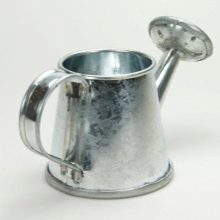
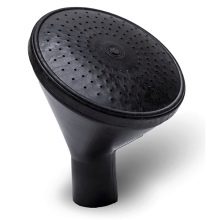

In the next video you will find a master class on decoupage of a metal watering can.
































































The comment was sent successfully.